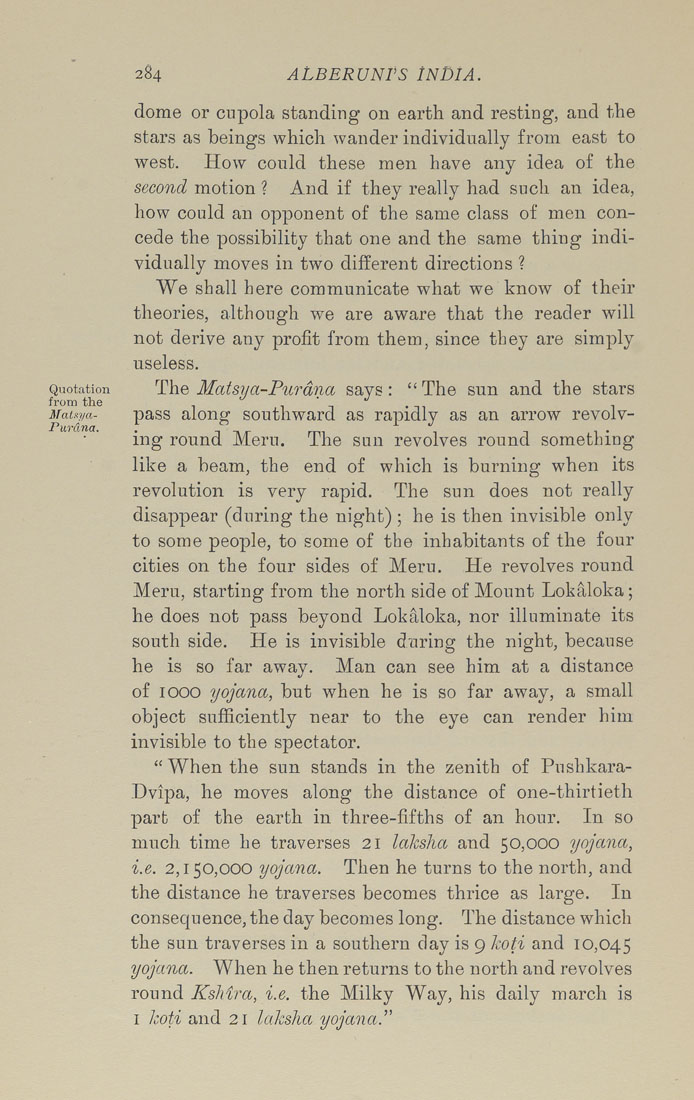Bīrūnī, Muḥammad ibn Aḥmad, Alberuni's India (v. 1)
(London : Kegan Paul, Trench, Trübner & Co., 1910.)
|
||
|
|
|
|
| Page 284 |

284 ALBERUNPS INDIA. dome or cupola standing on earth and resting, and the stars as beings which wander individually from east to west. How could these men have any idea of the second motion ? And if they really had such an idea, how could an opponent of the same class of men con¬ cede the possibility that one and the same thing indi¬ vidually moves in two different directions ? We shall here communicate what we know of their theories, although we are aware that the reader will not derive any profit from them, since they are simply useless. Quotation The Mcttsva-Purdna says : " The sun and the stars fromthe ^ '^ . ' "^ . _,, . Matsya- pass aloug southward as rapidly as an arrow revolv- Purdna. . -i nr mi i t i • mg round Meru. The sun revolves round something like a beam, the end of which is burning when its revolution is very rapid. The sun does not really disappear (during the night) ; he is then invisible only to some people, to some of the inhabitants of the four cities on the four sides of Meru, He revolves round Meru, starting from the north side of Mount Lokaloka; he does not pass beyond Lokaloka, nor illuminate its south side. He is invisible daring the night, because he is so far away. Man can see him at a distance of looo yojana, but when he is so far away, a small object sufficiently near to the eye can render him invisible to the spectator. "When the sun stands in the zenith of Pushkara- Dvipa, he moves along the distance of one-thirtieth part of the earth in three-fifths of an hour. In so much time he traverses 21 lakshct and 50,000 yojana, i.e. 2,150,000 yojana. Then he turns to the north, and the distance he traverses becomes thrice as large. In consequence, the day becomes long. The distance which the sun traverses in a southern day is 9 koti and 10,045 yojana. When he then returns to the north and revolves round Kshira, i.e. the Milky Way, his daily march is I koti and 21 laksha yojana." |
| Page 284 |







